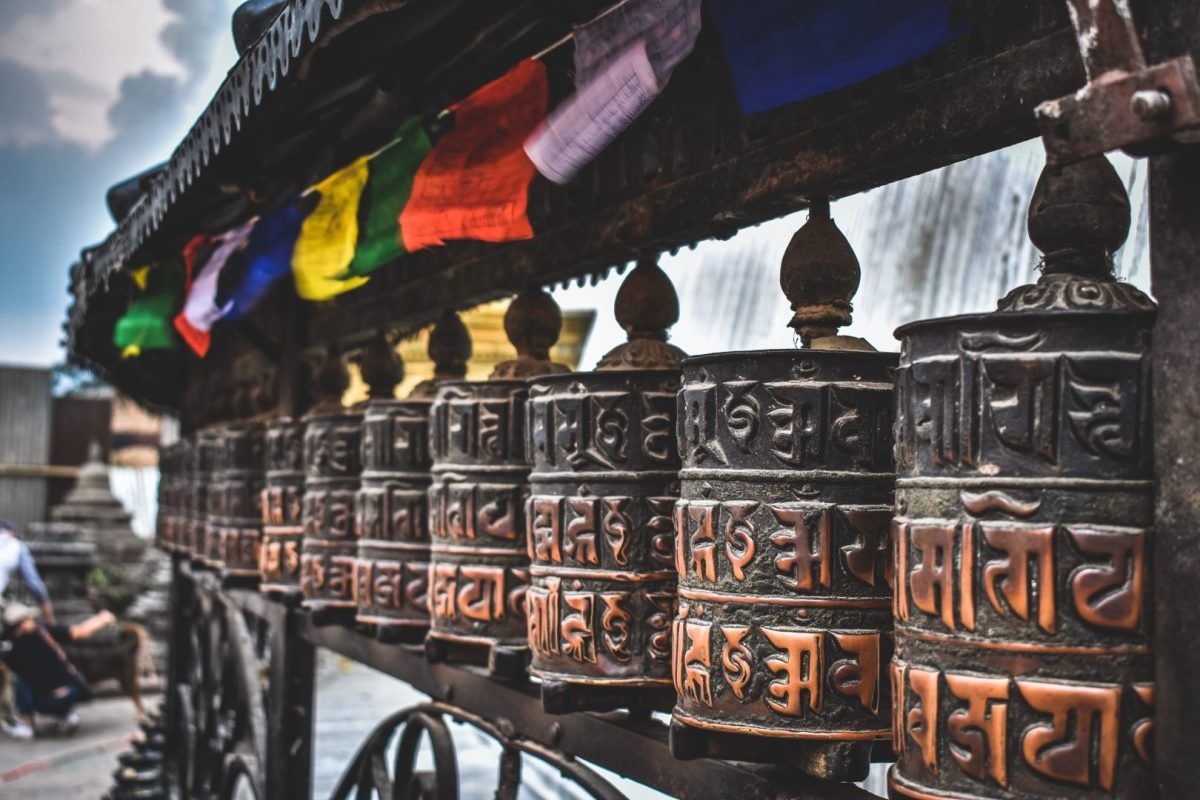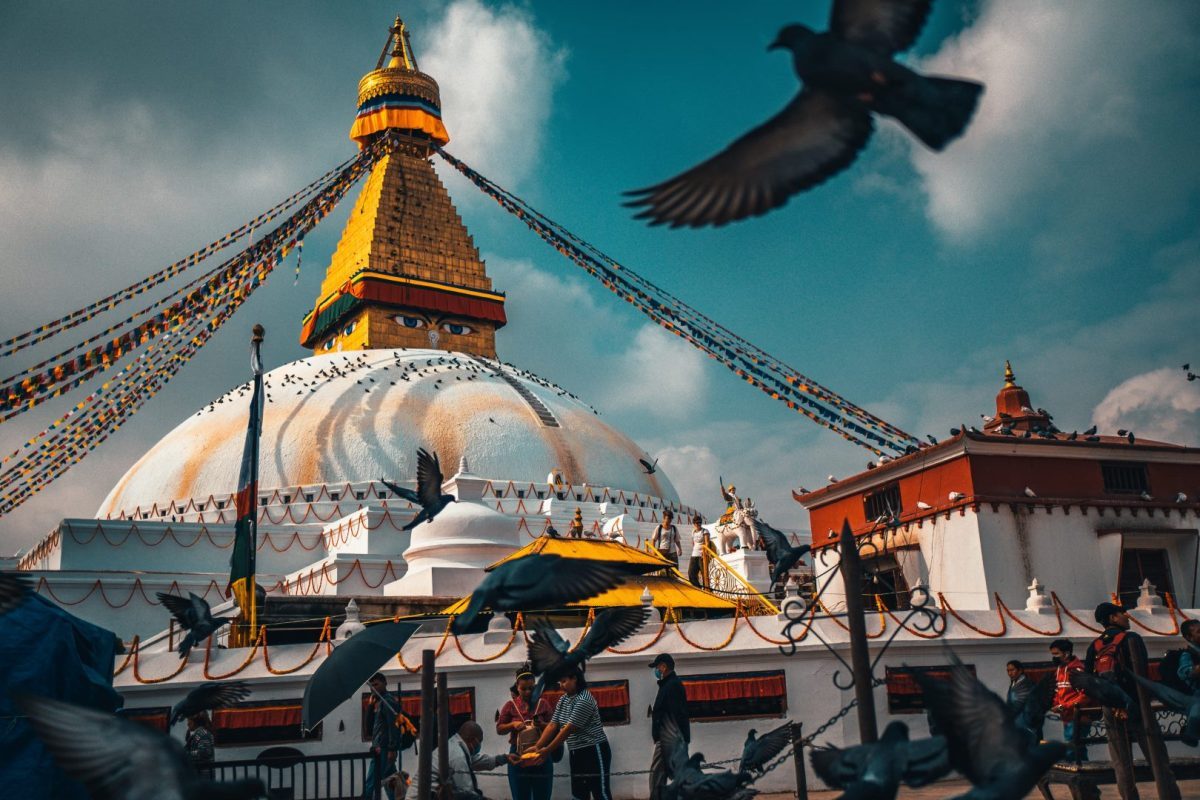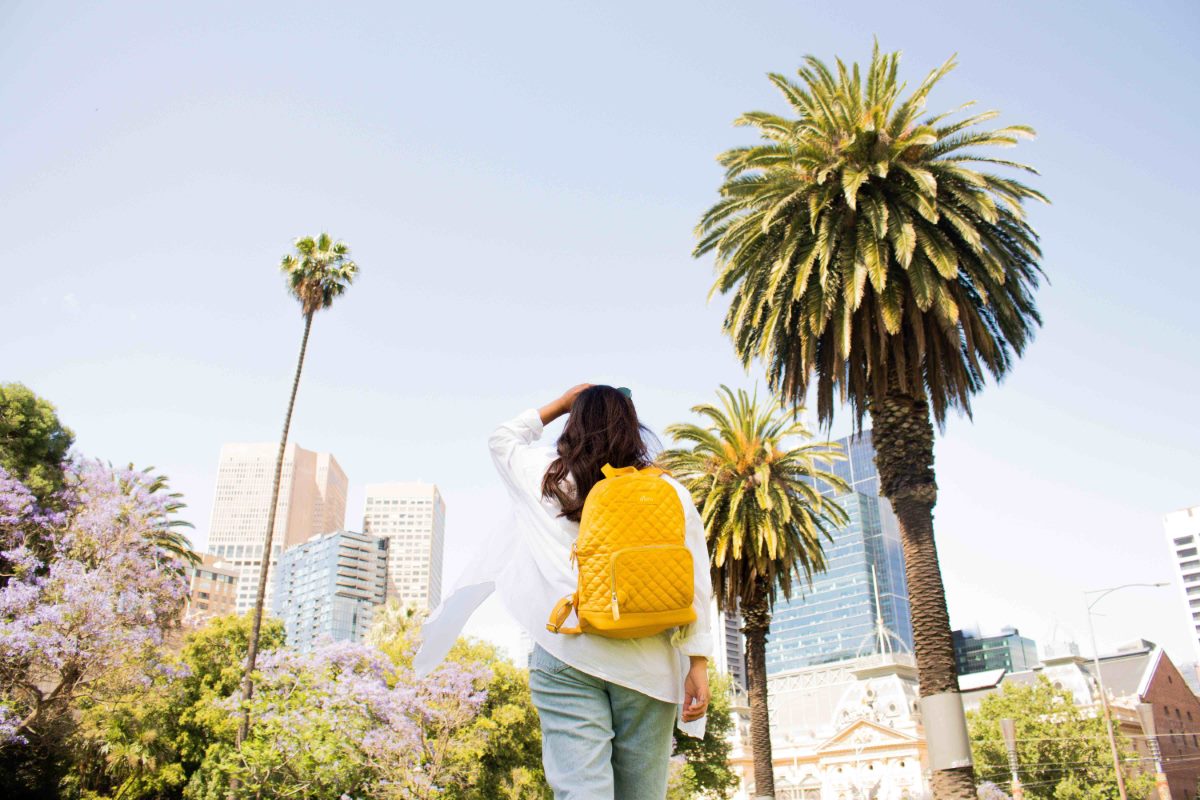How to Plan Your 15-Day Everest Base Camp Guided Trek in Kathmandu
Are you up for an adventure? A trek to the Everest base camp might be just the thing for you. This 15-day guided trek lets you experience breathtaking views of the Himalayas, explore the Sherpa culture, and witness the beauty of Sagarmatha National Park. Here’s how to plan your Everest Base Camp trek in Kathmandu.Experience
The Everest Base Camp Trek is a once-in-a-lifetime experience. You’ll see some of the world’s highest mountain peaks, including Mount Everest, the Lhotse, Nuptse, and Ama Dablam mountains. Additionally, you’ll get a chance to interact with the Sherpa community and learn about their culture and traditions. The trek includes visits to several monasteries and stupas, providing a glimpse into the spiritual side of Nepal.Highlights
Here are some key highlights of the trek: – Spectacular mountain views: The trek offers incredible views of the Himalayan range, including the world’s highest mountain peak, Mount Everest. – Sherpa Culture: Trek through several Sherpa villages, such as Namche Bazaar, and learn about their fascinating culture and traditions. – Sagarmatha National Park: Explore the unique flora and fauna of this UNESCO World Heritage site. – Dudh Koshi River/Bhote Koshi River: Cross several suspension bridges over two rivers, Dudh Koshi and Bhote Koshi. – Kalapatthar: Hike to Kalapatthar, a famous vantage point, for panoramic views of the Everest massif. – Monasteries and Stupas: Visit several monasteries and stupas, including the famous Tengboche Monastery and the Stupa in Namche Bazaar.Full Description
The 15-day Everest Base Camp trek starts in Kathmandu, where you’ll have a briefing with your guide about the trek. The next day, take a short flight to Lukla and start trekking towards Phakding. The trek continues through several Sherpa villages, suspension bridges, and dense forests of rhododendron and magnolia. On day 5, trek to Namche Bazaar, the gateway to the Khumbu region. This will be your first rest day, allowing you to acclimatize to the altitude. On day 6, hike to the nearby village of Khumjung to explore the local monastery and school. The trek then continues to Tengboche Monastery, passing through Pangboche village, said to be the oldest settlement in the Khumbu region. The next day, trek to Dingboche, where you’ll have another rest day to acclimatize. On day 10, trek to Lobuche, the starting point for your trek to Everest Base Camp. On day 11, hike to Gorak Shep and visit the iconic Khumbu Glacier, the highest glacier in the world. On day 12, hike to Kalapatthar, a famous vantage point, to witness a stunning sunrise with panoramic views of the Everest massif. The trek then continues to Everest Base Camp, where you’ll spend a few hours exploring the area before heading back to Gorak Shep. The trek back to Lukla follows the same route, with overnight stops at Pheriche, Tengboche, Namche Bazaar, and Phakding. On day 15, fly back to Kathmandu from Lukla.Booking and Preparing for the Trek
Book the trek through this link: Book the tour here. The tour includes airport transfers, roundtrip flights between Kathmandu and Lukla, porters, and all meals throughout the trek. Before the trek, make sure to get in shape by doing regular cardiovascular exercise and strength training. You’ll also need to pack appropriate clothing and gear, including a down jacket, windproof and waterproof pants and jacket, sturdy trekking boots, and a sleeping bag. In conclusion, the Everest Base Camp trek is a challenging but rewarding experience. It lets you explore the beauty of the Himalayas, witness the Sherpa culture, and appreciate the natural wonders of Nepal. With proper planning and preparation, you can make the most of your 15-day guided trek in Kathmandu, Nepal.
Frequently Asked Questions about Kathmandu
Kathmandu is the capital city of Nepal, and is famous for its rich cultural heritage, stunning architecture, and beautiful scenery. Here are some frequently asked questions and answers about the city that you might find useful.1. What are the best things to see and do in Kathmandu?
There are many incredible things to see and do in Kathmandu, including:- Visit the famous Pashupatinath Temple, which is one of the most sacred places in Nepal and is dedicated to Lord Shiva.
- Take a trip to the Kathmandu Durbar Square, which is a UNESCO World Heritage site and is home to many ancient buildings and temples.
- Explore Swayambhunath Stupa, also known as ‘Monkey Temple’, located on a hilltop and providing panoramic views of the city
- Visit Boudhanath Stupa, one of the largest stupas in the world and a holy site for Buddhists.
- Go shopping at the Asan Bazaar, which is a traditional market where you can buy everything from spices and food to clothing and souvenirs.
- Hike up to the top of the Shivapuri Nagarjun National Park to enjoy the scenic views of the Himalayas and experience the natural beauty of the area.
2. What is the weather like in Kathmandu?
Kathmandu has a temperate climate, with four distinct seasons. The best time to visit is from September to November when the weather is dry, and the skies are clear. This period is perfect for trekking, hiking and sightseeing. From December to February, it is colder with occasional snowfall, and it can be challenging to go for treks. March to May is also a great time to visit, as it is during the spring season, and the weather is mild and the landscapes are blooming.3. What is the local currency in Kathmandu?
The local currency in Kathmandu is the Nepalese rupee (NPR). ATMs are widely available in the city, and many establishments accept credit cards. It is always handy to carry some cash with you, especially if you are visiting small shops or street vendors.4. What is the food like in Kathmandu?
The food in Kathmandu is delicious and full of flavor. Local dishes include momos (dumplings filled with vegetables or meat), dal bhat (a traditional lentil soup with rice and vegetables), and choila (spicy grilled meat served with beaten rice). There are plenty of options for vegetarians and vegans, and international cuisines are also widely available. Street food in Kathmandu is popular and worth trying, but be sure to choose busy vendors to ensure freshness and hygiene.5. What is the best way to get around Kathmandu?
The best way to get around Kathmandu is on foot, as many of the city’s main attractions are located close to each other. Taxis and rickshaws are widely available, but please agree on a price before you start your journey. Public buses are also available but can be crowded and uncomfortable for some travelers. You can also rent a bike, scooter or motorcycle if you feel comfortable with local traffic conditions, but remember, traffic in Kathmandu is chaotic and risky.6. What should I wear when visiting Kathmandu?
Kathmandu is a conservative city, and it is respectful to dress modestly, especially when visiting religious sites. Shorts, tank tops or revealing clothing are not suitable for temple visits. Lightweight, breathable clothing is recommended, as it can get hot in the city during the daytime. If you’re planning on visiting during the winter season, be sure to bring warm clothing.7. Is it safe to travel to Kathmandu?
Kathmandu is generally a safe city for travelers, but as with any destination, there are risks. It is always necessary to take the appropriate precautions, such as avoiding walking alone at night, keeping valuables secure, drinking bottled water, and monitoring for any environmental risks. It is essential to research the current safety and health situation before your trip.8. What language is spoken in Kathmandu?
The official language of Kathmandu is Nepali. However, many locals speak and understand English, especially those in the tourism industry.9. How much should I tip in Kathmandu?
Tipping is not mandatory in Kathmandu, but it is always appreciated for good service. In restaurants or cafes, it is common to round up the bill or add a 10% tip. For trekking guides or porters, the standard tip is around 10-20% of the total cost of the trek. When visiting spiritual sites, it is customary to leave a small offering for the temple or donation box.10. What souvenirs can I bring back from Kathmandu?
Kathmandu is known for its handicrafts, and there’s no shortage of souvenirs to bring back home. Souvenirs like prayer flags, Thangka paintings, woodcarvings, and singing bowls are great options. You can also buy traditional clothing like saris, kurtas, or pashminas. Many shops sell handmade soaps, Himalayan salt, and spices. Just remember, haggling is part of the shopping experience in Kathmandu, so don’t forget to negotiate a good price.Book Your Tour Now
Kathmandu is a vibrant and exciting city with plenty of attractions for travelers to explore. From stunning temples to vibrant bazaars, the city has something for everyone. It is important to remember to respect local culture and customs when visiting, and to take appropriate precautions to stay safe. We hope you found this FAQ helpful in planning your trip to Kathmandu.
How to Spend Your Time as a Tourist in Kathmandu
Kathmandu, the capital city of Nepal, is a vibrant hub of ancient culture, stunning architecture, and natural beauty. This city is situated amidst the Himalayan mountain range and is home to several UNESCO World Heritage Sites. Kathmandu is a popular destination not only for mountain trekkers but also for tourists who want to witness the rich culture and history of this country. If you’re planning a visit to Kathmandu, here’s a guide to help you make the most of your time.1. Visit the Swayambhunath Stupa (Monkey Temple)
One of the most popular tourist attractions in Kathmandu is the Swayambhunath Stupa, also known as the Monkey Temple because of the monkeys that inhabit the area. The stupa, which is believed to be over 2,000 years old, is located on a hilltop and offers stunning views of the city. It’s also a place of worship for Buddhists and is adorned with prayer flags and mantras.2. Explore the Old City
The Old City of Kathmandu is a maze of narrow streets and alleys that are dotted with traditional Newari architecture. This area is home to several markets, temples, and squares, and is a fascinating place to explore on foot. Don’t miss Durbar Square, which is the historic center of Kathmandu and is home to the Kumari Palace, where the Living Goddess resides.3. Visit the Pashupatinath Temple
The Pashupatinath Temple is a sacred Hindu temple that is located on the banks of the Bagmati River. This temple is dedicated to Lord Shiva and is known for its stunning architecture and intricate carvings. Visitors can witness the cremation ceremonies that take place along the river, which are a significant part of Hindu culture.4. Trek to the Everest Base Camp
If you’re a mountain trekker, then a trek to the Everest Base Camp is a must-do activity in Kathmandu. This trek takes you through the stunning Himalayan mountain range and offers breathtaking views of the highest peak in the world. The trek itself takes around 12-14 days, and it’s best to undertake it during the spring and autumn months when the weather is favorable.5. Take a Flight over Mount Everest
If trekking isn’t your thing, you can still witness the stunning beauty of Mount Everest by taking a scenic flight over the mountain. These flights operate from Kathmandu and offer stunning views of the Himalayan mountain range.6. Explore the Patan Durbar Square
Patan Durbar Square is another historic center in Kathmandu, which is a UNESCO World Heritage Site. This area is home to several temples, palaces, and traditional Newari architecture. One of the highlights of Patan Durbar Square is the Krishna Temple, which is adorned with stunning carvings and sculptures.7. Visit the Boudhanath Stupa
The Boudhanath Stupa is another significant place of worship for Buddhists in Kathmandu. This stupa, which is one of the largest in the world, is set amidst a bustling market and is a fascinating place to explore. Visitors can witness the prayers and rituals that take place around the stupa and can also shop for handicrafts and souvenirs in the market.8. Take a Cooking Class
If you’re interested in Nepalese cuisine, then taking a cooking class is a great way to learn about the local food culture. Several cooking schools operate in Kathmandu, which offer classes on preparing traditional Nepalese dishes like momos, dal bhat, and chow mein.9. Enjoy the Nightlife
Kathmandu has a vibrant nightlife scene, which is centered around the Thamel area. This area is home to several bars, pubs, and restaurants, which offer a range of entertainment options like live music and dance performances.10. Visit the Narayanhiti Palace Museum
The Narayanhiti Palace Museum is a former royal palace that has been converted into a museum. This museum offers insights into the history of the Nepalese monarchy and is home to several artifacts and exhibits. In conclusion, Kathmandu is a city that offers a unique blend of ancient culture, stunning architecture, and natural beauty. Whether you’re a mountain trekker or a history buff, there’s something for everyone in this city. Use this guide to plan your trip and make the most of your time in Kathmandu.Table of Contents

